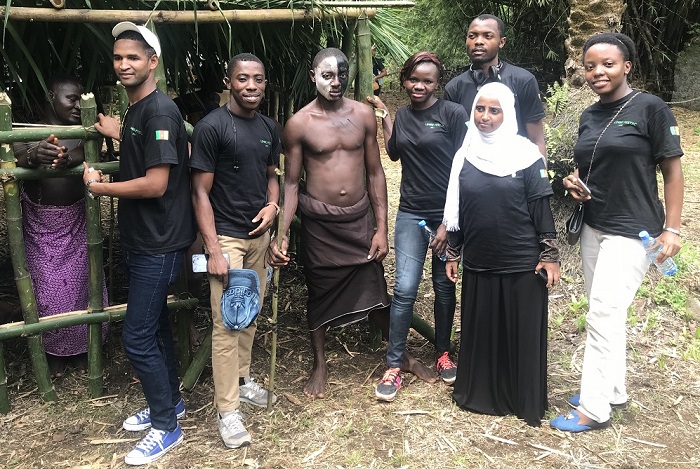Slave trade may have lost its shine and sheen, but relics of this callous activity which saw the buying and selling of human beings like commodities can still be seen in the historical city of Limbe, precisely in the village of Bimbia.
It is with this knowledge that AIMS Cameroon on April 11, responded to an invitation to visit the Bimbia Slave Trade village, as part of 2019’s Festival of Arts and Culture (FESTAC), the 6e edition of an annual cultural jamboree organized by the Limbe City Council.
Joining a host of visitors from different walks of life, Forty-Six (46) students along with three (3) staff, Two (2) tutors and two (2) lecturers made their way into the Bimbia slave site at 10 am.
This site, known as one of the largest in Central Africa during the slave trade era, reveals some of the horrors of the Transatlantic Slave trade that covered a period of 350 years and has till date, maintained its natural look. Slave merchants involved included the Portuguese, the Dutch, the Danes, the British, the Swedes, French and Germans.
In an opening speech, Mr. Charles Nname Manga, Deputy Mayor of the limbe III council, gladly welcomed all to the Limbe III subdivision, referring to Bimbia as a place with lavished tourism potentials.
While hammering on the site’s history, he noted that the essence is to understand the historic lesson of slave trading activities along the West Coast of Cameroon and to look back in time to correct the errors of yesterday for a better tomorrow.
The event was marked by an excellent drama piece, carefully put together to depict the capture, torture and sale of humans turned slaves by local ‘Bakweri’ rulers in exchange for liquor and gun powder from European slave buyers. Though in ruins, Vestiges of the over-a-century-old slave trade market were used to further tell the story.
La foule a été émerveillée par une poignée d'éléments historiques tels que les restes de chaînes d'esclaves, le chemin tracé du continent de Dikolo au point de départ, les huttes où les esclaves étaient gardés avant d'être emmenés vers l'ouest, la plage de sortie et l'inspection, la pesée et point de marquage des esclaves.
‘The Bimbia slave site suffered extensive damages due to bombardments of the British anti-slavery warship called Man “O” War, later designed to destroy any slave boats leaving Bimbia to the Americas’, Mr. Samuel Ngomba, Public Relations and Development officer of Limbe III council, explained.
Les étudiants d'AIMS Cameroun à la fin de la visite étaient heureux d'avoir eu la chance de comprendre ce qu'était la vie d'un Camerounais capturé sur le site et au-delà, une fois qu'ils ont franchi «la porte du non-retour».

